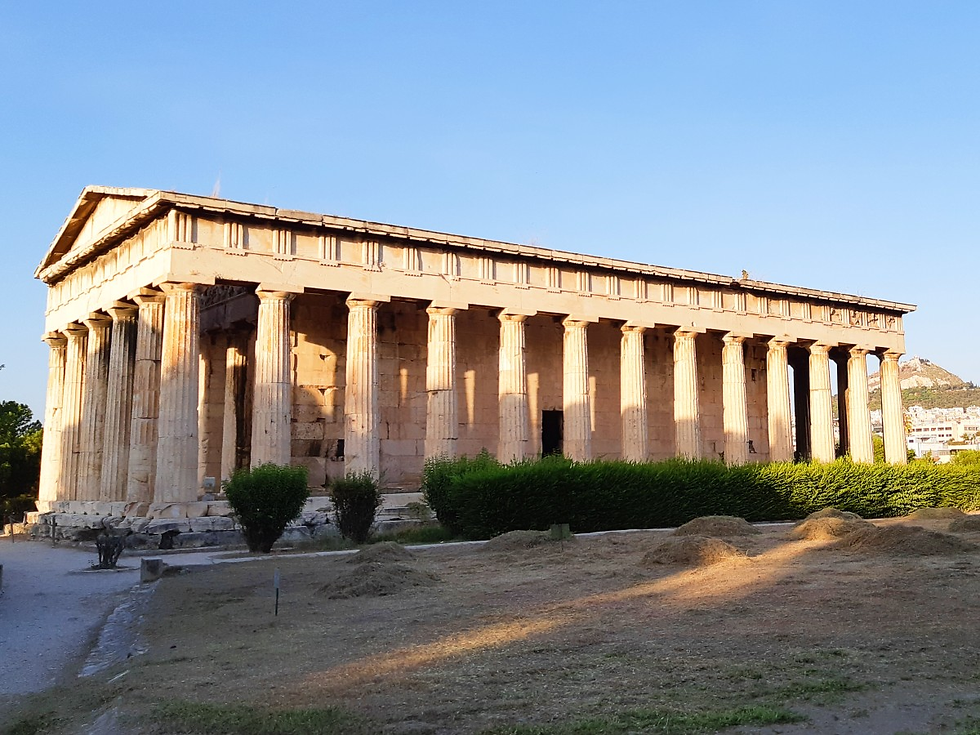Exploring the Acropolis
- Johnny Ka
- Jul 27, 2023
- 3 min read
Detailed guide to the Acropolis, including the Parthenon, Erechtheion, and Propylaea

Introduction:
Perched majestically atop a rocky hill in Athens, the Acropolis stands as a testament to the grandeur and architectural brilliance of ancient Greece. This review serves as a comprehensive guide to the Acropolis, offering a detailed exploration of its iconic structures—the Parthenon, Erechtheion, and Propylaea. Join us on a journey through time as we delve into the historical significance and architectural splendor of these ancient marvels.

The Parthenon: A Timeless Masterpiece:
The Parthenon, the most renowned structure on the Acropolis, is an architectural masterpiece and a symbol of classical Athens. Built in the 5th century BCE, this Doric temple was dedicated to the goddess Athena, the patron deity of the city. Its imposing marble columns, intricate friezes, and pediments tell the story of Greek mythology and the city's cultural achievements.

As you approach the Parthenon, the sheer magnitude of its size and the precision of its construction are awe-inspiring. Take time to admire the elaborate metopes depicting scenes from Greek mythology and the stunning sculptural details that adorn the pediments.

Inside the Parthenon, marvel at the remnants of the colossal statue of Athena Parthenos, created by the renowned sculptor Phidias. Although the statue is no longer present, its significance and grandeur can still be felt within the temple's sacred space.
The Erechtheion - Elegance and Mystique:
Adjacent to the Parthenon, the Erechtheion is an architectural gem that showcases the intricacy and grace of Ionic design. This temple, dedicated to both Athena and Poseidon, boasts six graceful Caryatids—sculpted female figures serving as columns—supporting its southern porch. Each Caryatid is unique in its pose and attire, adding to the allure and artistic mastery of the structure.

As you explore the Erechtheion, take note of the exquisite friezes, sculptural reliefs, and the Porch of the Maidens, where the Caryatids stand in all their splendor. The Erechtheion's distinct layout, incorporating multiple sacred spaces and mythological significance, adds a layer of mystique and intrigue to this extraordinary monument.

The Propylaea: Gateway to the Acropolis:

Serving as the monumental entrance to the Acropolis, the Propylaea is a grand gateway that sets the stage for the architectural wonders that lie beyond. Designed by the architect Mnesicles, this imposing structure features a monumental marble staircase, Doric and Ionic columns, and impressive architectural details.
As you ascend the steps of the Propylaea, pause to appreciate the intricate marble carvings and the commanding views of Athens unfolding before you. The Propylaea's strategic positioning and meticulous design create a sense of anticipation and reverence as visitors approach the sacred space of the Acropolis.
Exploring the Acropolis:
Beyond the individual structures, the Acropolis itself is a sprawling archaeological site that invites exploration and contemplation. As you wander along the ancient pathways, take in the sweeping views of Athens, its surrounding hills, and the Aegean Sea in the distance.
Amidst the ruins, you will encounter other noteworthy structures, such as the Temple of Athena Nike, which stands as a testament to victory and harmony. The Odeon of Herodes Atticus, a beautifully preserved amphitheater, is a testament to the cultural significance of the Acropolis throughout history.

Tips for a Memorable Visit:
Arrive early: To avoid crowds and experience the Acropolis in relative tranquility, aim to arrive early in the morning or later in the afternoon.
Wear comfortable shoes: The Acropolis involves walking on uneven surfaces and steep steps, so it's essential to wear sturdy and comfortable footwear.
Stay hydrated: Athens can be hot, especially during the summer months. Carry water with you to stay hydrated throughout your visit.
Respect the site: The Acropolis is a UNESCO World Heritage site, and it's crucial to respect the rules and regulations in place to preserve its integrity. Do not touch the ancient structures or remove any artifacts.
Engage with a guide: Consider hiring a knowledgeable guide or joining a guided tour to gain deeper insights into the historical and cultural significance of the Acropolis and its structures.
Conclusion:
The Acropolis, with its iconic Parthenon, graceful Erechtheion, and grand Propylaea, stands as a testament to the enduring legacy of ancient Greece. Exploring these architectural wonders is a journey through time, immersing oneself in the rich cultural tapestry of Athens. As you traverse the sacred grounds of the Acropolis, the stories of gods and goddesses, the achievements of a civilization, and the brilliance of ancient architects come alive. Let the Acropolis captivate your senses and leave an indelible mark on your understanding of human ingenuity and the timeless beauty of Greek civilization.




Comments